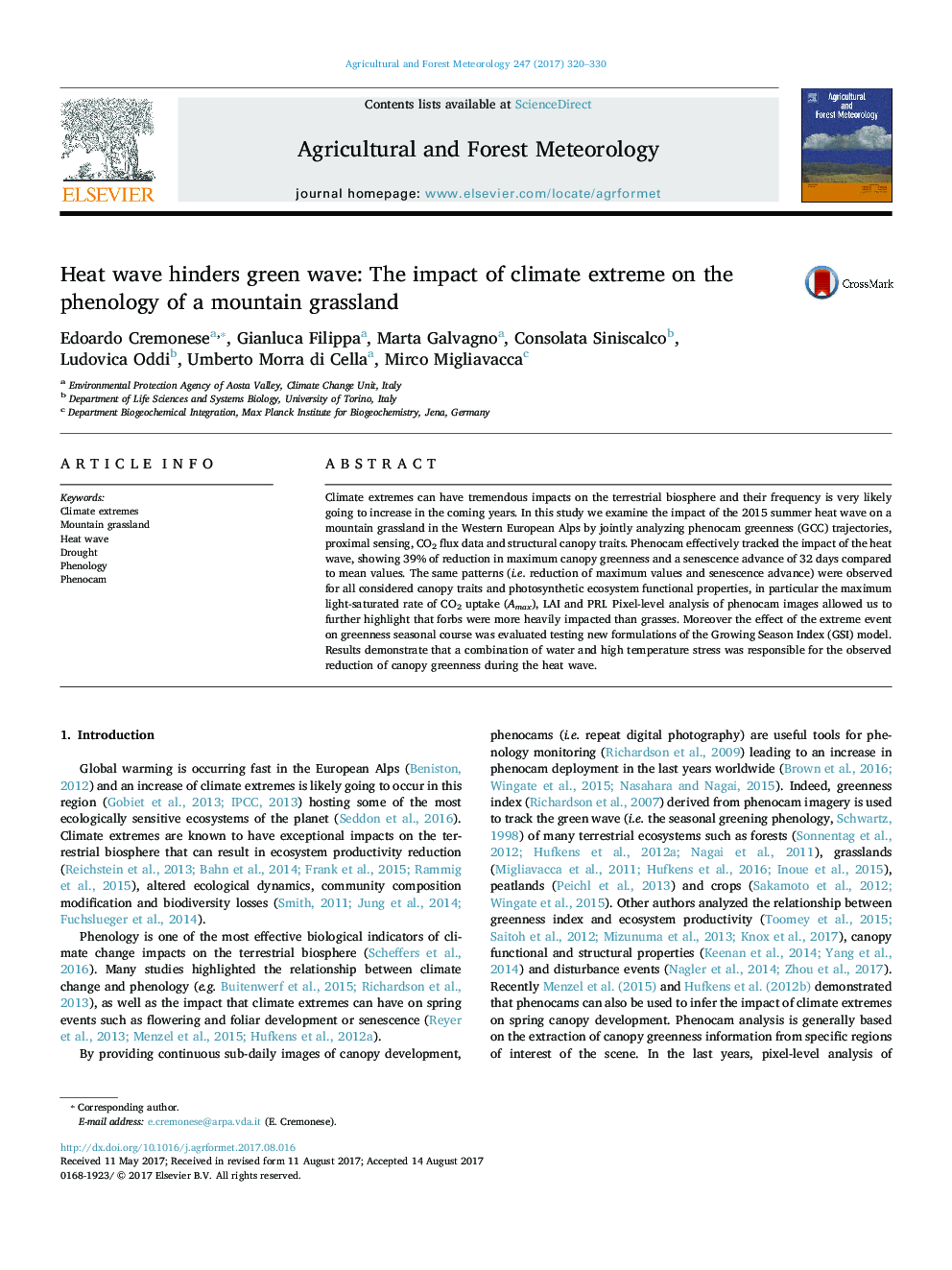| Article ID | Journal | Published Year | Pages | File Type |
|---|---|---|---|---|
| 6457788 | Agricultural and Forest Meteorology | 2017 | 11 Pages |
â¢We analyze the impact of a summer heat wave on the phenology of a mountain grassland.â¢Canopy greenness and ecosystem properties show a reduction of peak values and early senescence.â¢Forbs were more impacted than grasses.â¢The co-occurrence of drought and high temperature hindered the seasonal course of canopy greenness.
Climate extremes can have tremendous impacts on the terrestrial biosphere and their frequency is very likely going to increase in the coming years. In this study we examine the impact of the 2015 summer heat wave on a mountain grassland in the Western European Alps by jointly analyzing phenocam greenness (GCC) trajectories, proximal sensing, CO2 flux data and structural canopy traits. Phenocam effectively tracked the impact of the heat wave, showing 39% of reduction in maximum canopy greenness and a senescence advance of 32 days compared to mean values. The same patterns (i.e. reduction of maximum values and senescence advance) were observed for all considered canopy traits and photosynthetic ecosystem functional properties, in particular the maximum light-saturated rate of CO2 uptake (Amax), LAI and PRI. Pixel-level analysis of phenocam images allowed us to further highlight that forbs were more heavily impacted than grasses. Moreover the effect of the extreme event on greenness seasonal course was evaluated testing new formulations of the Growing Season Index (GSI) model. Results demonstrate that a combination of water and high temperature stress was responsible for the observed reduction of canopy greenness during the heat wave.
